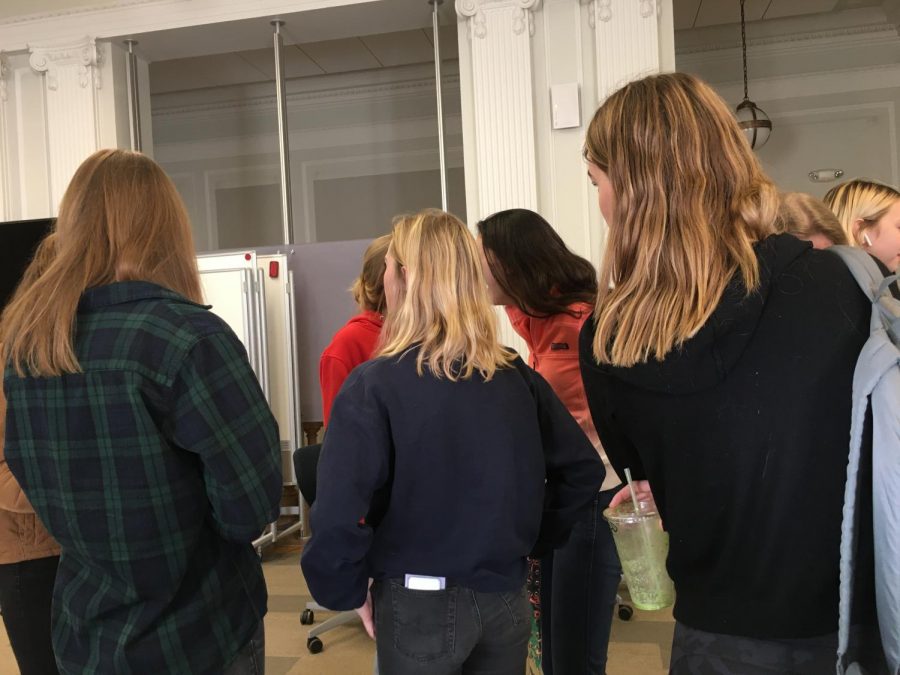Students use dress code to protest racism, sexual misconduct
Junior girls gather in the Center before their class meeting in the Williams Library to discuss their concerns about perceived racism and sexual misconduct. The meeting lasted 70 minutes and students were excused from their A Period class attend.
March 2, 2020
Girls from all grades wore yoga pants, ripped jeans and T-shirts to bring attention to community issues that many members of the student body said need to be addressed by the school administration on Monday.
Following an email sent to parents by President Ann Marie Krejcarek over Winter Break that brought to light issues of behavioral misconduct, many students chose to be out of dress code to communicate the desire for action against issues like racism and sexual harassment.
“I think a lot of people want to be a part of this because we have not seen action being taken,” junior Tara Boyd said. “We hear jokes about these issues and people talk about it, but nothing actually happens, so we want to show that the students care about what is happening at our school.”
Administrators held a meeting with the Junior Class, who spearheaded the protest, during A Period to begin a dialogue and create a forum for juniors to voice the reasoning behind the protest.
“We were recognizing that the juniors had chosen to show a display of solidarity,” Head of School Rachel Simpson said. “We wanted to acknowledge what is the bigger conversation, what is the more courageous conversation.”
Students used the platform of the dress code, a unifying entity for all grades, to show the general consensus of frustration and distress surrounding greater issues.
“We are not going to sit by,” Boyd said. “We need to see something changing.”
By holding a dialogue with students, the administration voiced its willingness to listen to students in addition to acknowledging the importance of protesting, according to Simpson.
“I hope that even being in the room together and asking questions and saying things is helpful in its own right,” Simpson said. “We’ll ask what else the juniors want to say and then we will find the most appropriate programming or response to that.”
News about the protest was not only spread by word of mouth but through social media posts on Snapchat.
“I found out about it because it got sent to a group chat on social media,” sophomore Sage Gould said. “I think it was really trying to show a united sisterhood.”
Some students said that there should have been another means of protesting other than just being out of dress code. Some questioned its cohesion and said having an assembly or a meeting with administrators would have been more impactful.
Students in compliance with dress code were unwilling to go on the record as to why they did not participate in the protest, although multiple students said they received “dirty looks” for wearing regulation attire.
The meeting with administrators in tandem with the dress code protest drew emphasis to the mental and physical well-being of students through increased administrative support and improved communication within the community.
“I really think the administration was listening to us,” Boyd said. “I think the meeting was good because we all got to hear from their perspective, as well as get our message across loud and clear.”










